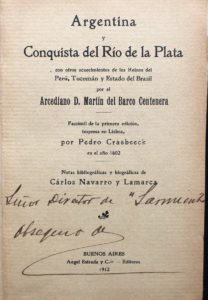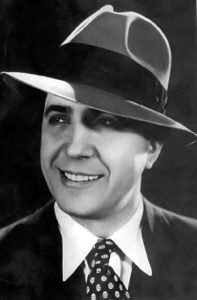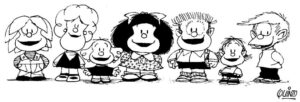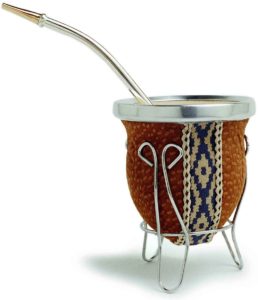Enjoying Buenos Aires as a Local: people & history
After one year living in Buenos Aires, I’ve designed a guide to enjoy this beautiful city as a local. It doesn’t matter where you come from or you interests, you’ll find a lot of activities to spend your vacations here.
I’m sure that about restaurants, hotels or nightclubs you’ll find a lot of information in Swarm, Yelp or Tripadvisor, so this series of articles are related to: people & history, public places, how to find events and some additional tips.
You’ll enjoy Buenos Aires as a local, keep reading!
- People & History
- Location: Buenos Aires is in Argentina, to understand better the location, first you need to know that Buenos Aires is divided in: Capital City (Ciudad Autónoma de Buenos Aires) –CABA- and province, a.k.a Provincia de Buenos Aires. This guide is mainly focused in the Capital City.

- History tips:
- Name: The name Argentina appeared for the first time in a book published in 1596 by Martín del Barco Centenera. It’s in Spanish (old Castilian) you can read it for free here.
- Virreynato del Rio de la Plata: During Spaniard colonization, the land we know today as Argentina belonged to the Viceroyalty of the Río de la Plata, by the time, it also included the territories that today we call Bolivia, Uruguay, Paraguay, some territories in the south of Brazil and in the north of Chile. This territorial division ended in 1814.
- Buenos Aires, capital city: founded in 1580
- José de San Martín: leader of the southern part of South America.
- European immigration: millions of European immigrants came to Argentina during WWI and WWII. The best example of this is that in 1914, around 60% of the male population in the country was immigrant. Even today, it’s common that Argentinean population doesn’t feel linked to Latin America.
- Population: According to the 2010 census, there are 2.890.151 inhabitants in Buenos Aires (Capital City).
- Visa: As a tourist, you can stay here up to three months. Most of the countries do not require visa, however you can check out the complete list and requirements here.
- Politicians
- Juan Domingo Perón and his wife, Eva: both of them are very well known in the local history. This is a sensitive point in the Argentinean society, for some of them Perón was on the best Presidents that Argentina has had. For some the worst dictator the country had.
Eva Perón was his second wife; she died very young but is always remembered as a person who was close to the poor class.
- Writers
- José Hernández: his most well-known book is “Martín Fierro” a novel that describes gaucho life in Argentina. Gaucho is the word used to describe the man who lives in the farm. It’s in Spanish, you can read it for free here.
- Julio Cortazar: His most well-known book is Rayuela which was published in 1963. It’s very particular because you can read it in different ways. Every story is different. You can read it for free here.
- Musicians
-

Carlos Gardel
Carlos Gardel: He was a tango singer. Son of an immigrant mother, his place of birth is still unknown, so far, there are three theories: Tolousse (France), Buenos Aires (Argentina), Tacuarembó (Uruguay). Died after a flight accident in Medellin, Colombia.
- Gustavo Cerati: He belonged to the famous rock band Soda Stereo, after the separation he played solo during years. In 2010 suffered a brain strike in Caracas, Venezuela after a concert, was in comma during four years, died in Argentina in 2014.
- Medicine
- Luis Agote: Discovered the method of preserving human blood for deferred use in transfusions by adding sodium citrate.
- Inventions
- Ladislao Biro: Invented modern ballpoint pen, so that’s the reason here instead of call pens as “boligrafo” or “pluma” they call it “Birome”
- Sports
- Soccer
- ¿Boca o River?: This is a big issue here, it’s very important to support a soccer team and watch the games every Sunday. A very popular question: “¿Boca o River?” or “¿De qué cuadro sos?” meaning: which team do you support?
- Maradona: The most popular Argentinean soccer player. Nowadays is not playing anymore but supports his team during big tournaments. It’s been related to drug problems.
- Messi: A young player who belongs to Argentine Football Association (Argentina) and Paris Saint-Germain F.C. (France)
- Polo: This is the second most played sport played here. Big tournaments are celebrated during summer.
- Humor
 Mafalda by Quino: Joaquín Salvador Lavado, a.k.a Quino, invented Mafalda, a very popular comic strip published between 1964 and 1973. It’s important to highlight that this was a very difficult time in Argentinean history, there were dictatorial times. Mafalda, as a young girl talked about freedom and a better world. She likes The Beatles but hates soup.
Mafalda by Quino: Joaquín Salvador Lavado, a.k.a Quino, invented Mafalda, a very popular comic strip published between 1964 and 1973. It’s important to highlight that this was a very difficult time in Argentinean history, there were dictatorial times. Mafalda, as a young girl talked about freedom and a better world. She likes The Beatles but hates soup.- Les Luthiers: Argentine comedy-musical group founded in 1967. Very well know because their sophisticated humor and home-made musical instruments in reference to their name luthiers, French for “musical instrument maker”.
- Social code:
- Life starts late: Compared to other cities in Latin America, daily life starts late here. It’s common that Banks or stores open after 9am. However, they close around 7 or 8pm.
- Men kiss in the cheek: Here, differently to other countries from South America, men kiss in the cheek when saying Hi and goodbye. For both, men and women even if you’re meeting someone for the first time, it’s very common a kiss in the cheek and not shaking hands.
-

Mate: Mate is a tea beverage drunk mainly in Argentina, Bolivia and Paraguay. Is a very particular flavor. You drink it in a cup also called mate, using a straw called bombilla. According to the social code, from a mate cup can drink every person in the same table (so be aware if you have a cold!).
- Asado: Very typical beef BBQ prepared during the weekends or holidays.
- Vos: Argentina is not the only place in South America that use “vos” an old castillian voice referred to the second person of singular (you). In the north of South America, they also use it, but differently, e.g: in Maracaibo (Venezuela), people say “Vos hacéis”. Here in Buenos Aires you’ll hear it different: “vos hacés” (You do –simple present-)
Next piece will be related to places and how to get there. Stay tuned!
My other pieces about Buenos Aires:
❤️Thank you for reading this far!
🔀 Do you think this article can be of help to you or someone you know? Share it!
💸You could also support me through Paypal or Binance.
✨ You can also support this project with items from this Amazon list.
🧠 Do you need advice related to Communication or Marketing Analytics? Check out my Brain-Picking Session.




